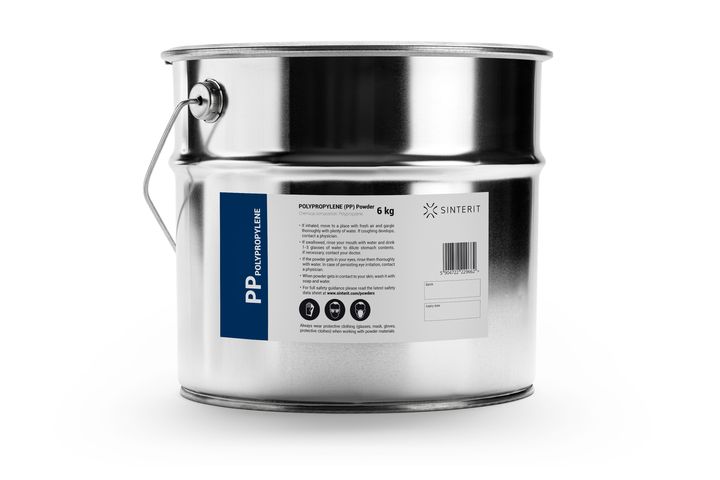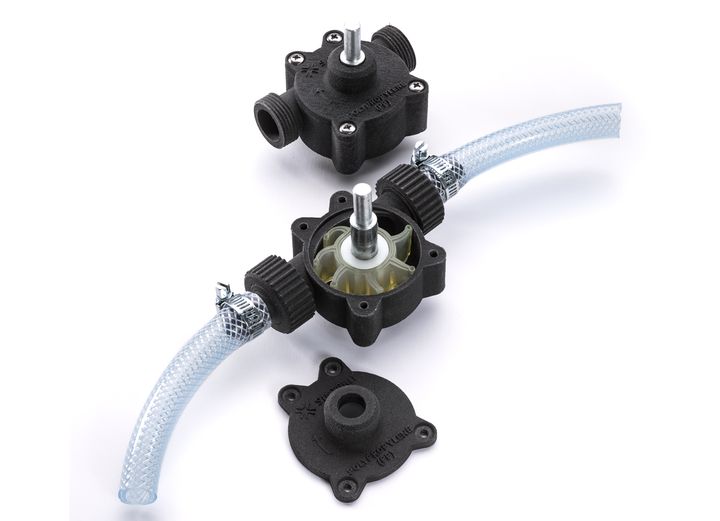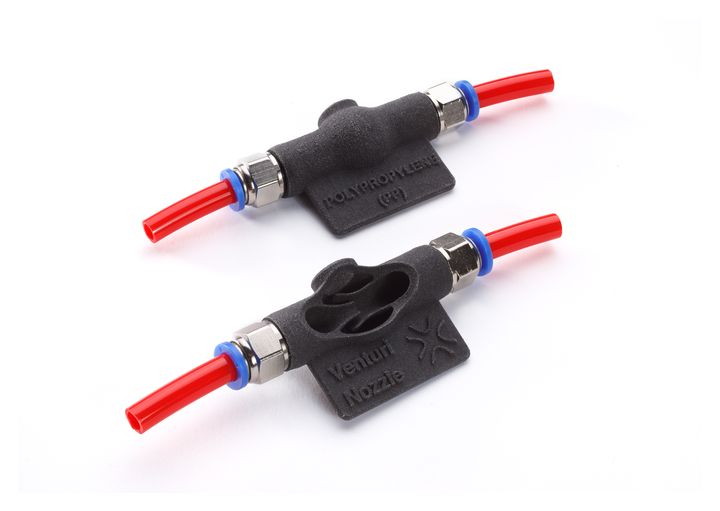
Sinterit announced the availability of a new polypropylene material for their low-cost, compact SLS 3D printers.
The company has been providing low-cost SLS devices for some years, breaking the cost barrier as most commercial SLS systems are significantly more expensive.
Beginning with a single material, the company has added several to its portfolio, which now boasts eight different powders, including several nylons and TPU variations. Now, “PP” joins their materials catalog.
PP is a highly desirable 3D print material as it offers a variety of useful properties applicable to many applications:
- It’s relatively lightweight as compared to nylons
- It has very high impact strength and is quite durable
- It offers outstanding chemical resistance
- It does not absorb much moisture
- It does not become brittle
The low density and low absorption characteristics of PP make it ideal for use in fluid-exposed parts, an application being highlighted by Sinterit in their announcement material. You can see an example of such a part here:

Sinterit explains the new PP powder:
“This material is based on a chemical-resistant that has low water absorption. It is something unique in the compact SLS 3D printers segment. Until now there was nothing like this available. The only air and watertight material was the TPE, again from Sinterit, but it needed a special sealer to be applied after printing. With the new PP, it is not required.”
It’s not just fluid applications that Sinterit has targeted. Sinterit believes the automotive industry could also make very good use of PP. Their Co-Founder and Chief Business Development Officer, Konrad Glowacki, said:
“Our PP is suitable for functional prototyping of the ducting in the air intake, fan shrouds and electronic housings.”
While many vendors offer PP materials for their 3D printing equipment, it’s not something you’d see on low-cost SLS equipment, at least until now.

PP has long been used in filament form on inexpensive FFF 3D printers, and sometimes on pellet FFF 3D printers. However, this could be the first time it’s made available for inexpensive SLS equipment.
That’s quite important, because SLS 3D prints can be of significantly higher quality than those made by FFF processes. FFF prints typically have tiny gaps between extruded layers, often making prints copiously leak if used for water applications.
SLS PP prints should be completely sealed, as explained by Sinterit, and thus entirely suitable for direct end-use application.
Readers using Sinterit equipment, the LISA or LISA Pro, can make use of the new PP powder, and those requiring PP SLS prints should consider getting one.
Via Sinterit
